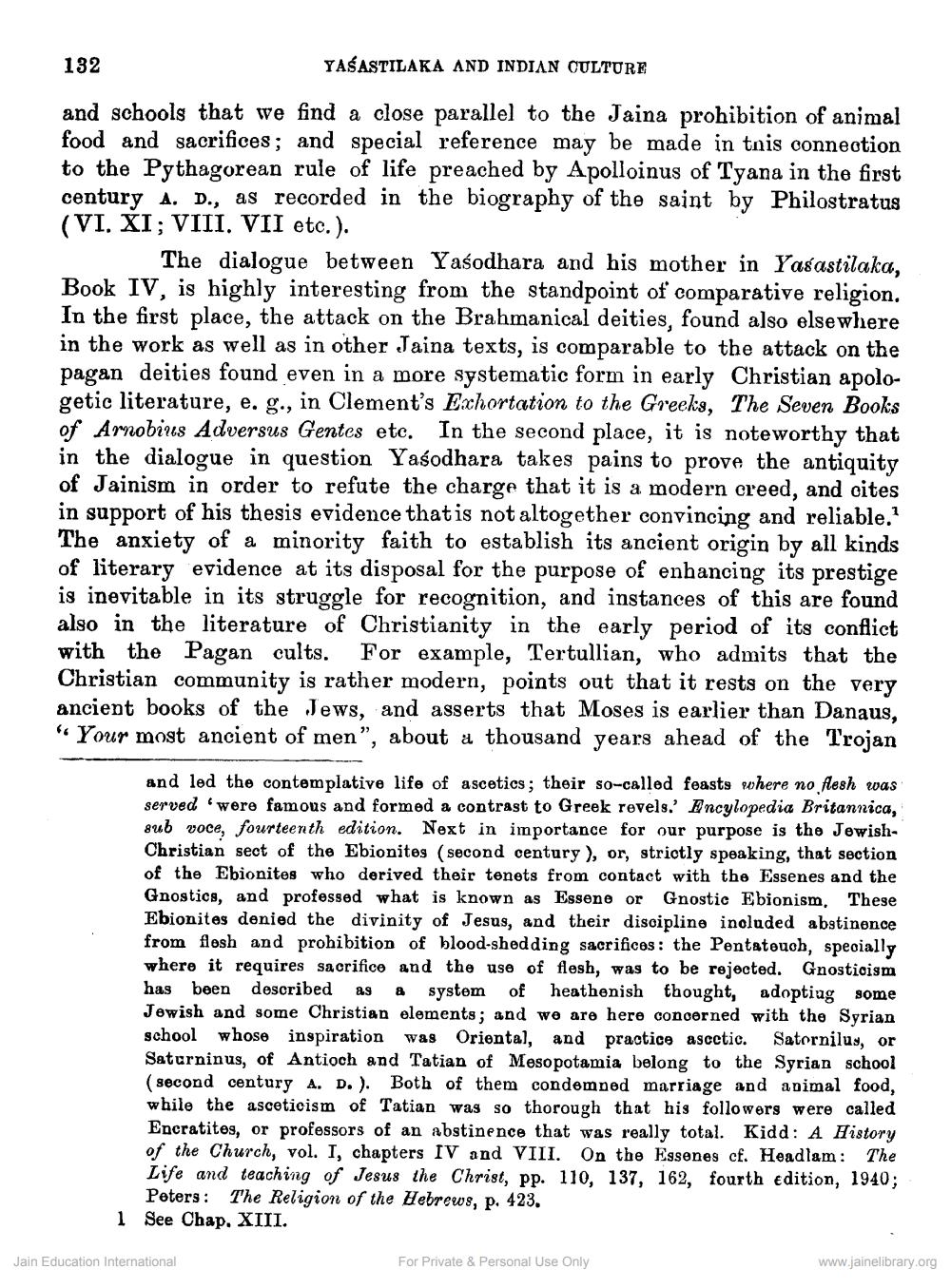________________
132
YAŠASTILAKA AND INDIAN CULTURE
and schools that we find a close parallel to the Jaina prohibition of animal food and sacrifices; and special reference may be made in tnis connection to the Pythagorean rule of life preached by Apolloinus of Tyana in the first century A. D., as recorded in the biography of the saint by Philostratus (VI. XI; VIII. VII etc.).
The dialogue between Yasodhara and his mother in Yasastilaka, Book IV, is highly interesting from the standpoint of comparative religion. In the first place, the attack on the Brahmanical deities, found also elsewhere in the work as well as in other Jaina texts, is comparable to the attack on the pagan deities found even in a more systematic form in early Christian apologetic literature, e. g., in Clement's Eschortation to the Greeks, The Seven Books of Arnobius Adversus Gentes etc. In the second place, it is noteworthy that in the dialogue in question Yasodhara takes pains to prove the antiquity of Jainism in order to refute the charge that it is a modern creed, and cites in support of his thesis evidence thatis not altogether convincing and reliable.' The anxiety of a minority faith to establish its ancient origin by all kinds of literary evidence at its disposal for the purpose of enhancing its prestige is inevitable in its struggle for recognition, and instances of this are found also in the literature of Christianity in the early period of its conflict with the Pagan cults. For example, Tertullian, who admits that the Christian community is rather modern, points out that it rests on the very ancient books of the Jews, and asserts that Moses is earlier than Danaus, "Your most ancient of men”, about a thousand years ahead of the Trojan
and led the contemplative life of ascetics; their so-called feasts where no flesh was served were famous and formed a contrast to Greek revels.' Encylopedia Britannica, sub voce, fourteenth edition. Next in importance for our purpose is the JewishChristian sect of the Ebionites (second century), or, strictly speaking, that section of the Ebionites who derived their tenets from contact with the Essenes and the Gnostics, and professed what is known as Essene or Gnostic Ebionism. These Ebionites denied the divinity of Jesus, and their discipline inoluded abstinence from flesh and prohibition of blood-shedding sacrifices: the Pentateuch, specially where it requires sacrifice and the use of flesh, was to be rejected. Gnosticism has been described as a system of heathenish thought, adopting some Jewish and some Christian elements; and we are here concerned with the Syrian school whose inspiration was Oriental, and practice ascetic. Satornilus, or Saturninus, of Antioch and Tatian of Mesopotamia belong to the Syrian school (second century A. D.). Both of them condemned marriage and animal food, while the asceticism of Tatian was so thorough that his followers were called Encratites, or professors of an abstinence that was really total. Kidd: A History of the Church, vol. I, chapters IV and VIII. On the Essenes cf. Headlam: The Life and teaching of Jesus the Christ, pp. 110, 137, 162, fourth edition, 1940;
Peters: The Religion of the Hebrews, p. 423. 1 See Chap. XIII.
Jain Education International
For Private & Personal Use Only
www.jainelibrary.org




